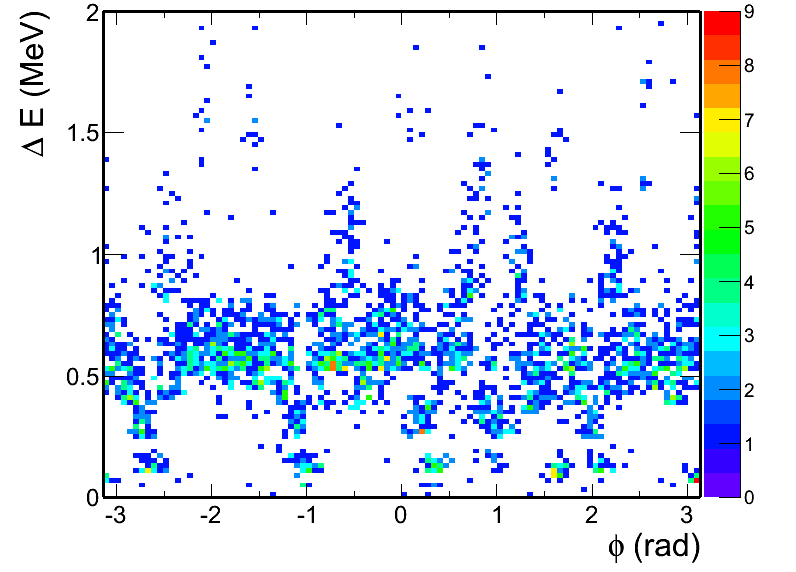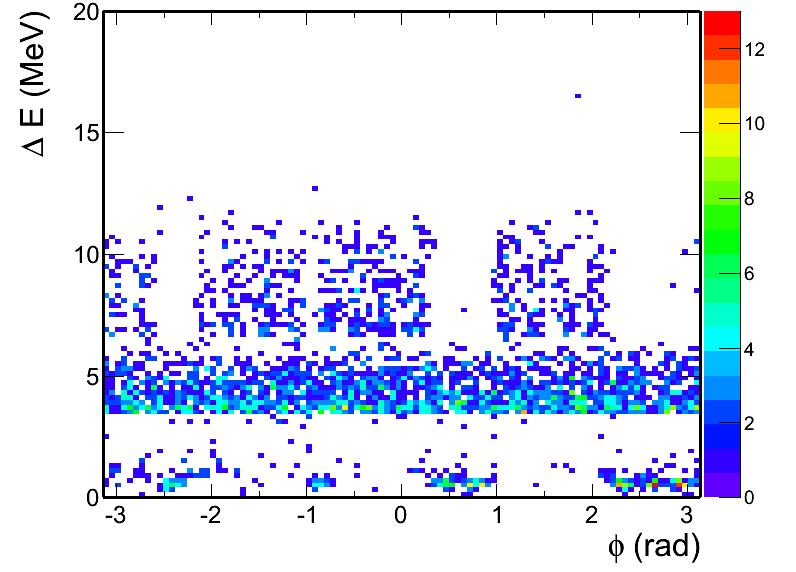Sti Geometry Check with SL14g - July 23, 2014
I tested the Sti HFT geometry again the SL14g library done on July 22, 2014. Please see the results below. Please refer to the earlier posts for preceeding studies.
https://drupal.star.bnl.gov/STAR/blog/dongx/sti-geometry-test
https://drupal.star.bnl.gov/STAR/blog/dongx/sti-geometry-test-list-results-dated-may-15-2014
https://drupal.star.bnl.gov/STAR/blog/dongx/sti-test-with-hft-geometry-closer-look-energy-loss-understand-position-dmetric-band
https://drupal.star.bnl.gov/STAR/blog/dongx/sti-geometry-test-dmetric-vs-phi-with-genes-sti-fix
The following plots show the difference between the default Sti configuration and the one without StiPxl.
.png)
.png)
.png)

One quick estimate on the expected energy loss for MIP particles are
PXSI (silicon volume): 50 microns -> 0.019 MeV
GLUA+GLUB+GLUC (adheresive material): 200 microns in total -> 0.04 MeV
Cu-cable: 90 microns -> 0.113 MeV
Carbon fiber support: 175 microns -> 0.037 MeV
---------------------------------------------
All together will be 0.2 MeV per layer, which is 0.4 MeV for two layers if the tracks only go through the two detector layers (not the sector the walls).
The observed dE so far is about a factor of 2-3 larger. The energy loss fix patch seems not in place yet (double count the density factor).
The following distributions show the differencen between the cases w/ and w/o StiIst in tracking
.png)
.png)


The following distributions show the differencen between the cases w/ and w/o StiSsd and StiSst in tracking
.png)
.png)
.png)

The following distributions show the differencen between the cases w/ and w/o StiSsd and StiSst in tracking with the latest SSD codes from Jonathan (July 24) and DEV library (not compilable in SL14g)
.png)
.png)
.png)
.png)
- dongx's blog
- Login or register to post comments
